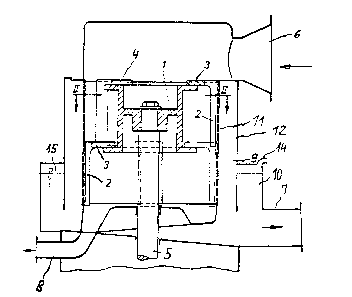Some of the information on this Web page has been provided by external sources. The Government of Canada is not responsible for the accuracy, reliability or currency of the information supplied by external sources. Users wishing to rely upon this information should consult directly with the source of the information. Content provided by external sources is not subject to official languages, privacy and accessibility requirements.
Any discrepancies in the text and image of the Claims and Abstract are due to differing posting times. Text of the Claims and Abstract are posted:
| (12) Patent: | (11) CA 1268734 |
|---|---|
| (21) Application Number: | 1268734 |
| (54) English Title: | SORTER FOR PAPER PULP SUSPENSIONS |
| (54) French Title: | TAMIS POUR PATES DE PAPIER |
| Status: | Expired and beyond the Period of Reversal |
| (51) International Patent Classification (IPC): |
|
|---|---|
| (72) Inventors : |
|
| (73) Owners : |
|
| (71) Applicants : |
|
| (74) Agent: | SMART & BIGGAR LP |
| (74) Associate agent: | |
| (45) Issued: | 1990-05-08 |
| (22) Filed Date: | 1986-01-29 |
| Availability of licence: | N/A |
| Dedicated to the Public: | N/A |
| (25) Language of filing: | English |
| Patent Cooperation Treaty (PCT): | No |
|---|
| (30) Application Priority Data: | ||||||
|---|---|---|---|---|---|---|
|
ABSTRACT OF THE DISCLOSURE
The present invention relates to a sorter comprising a screen in
the form of a stationary, rotationally symmetrical wire cage, in the
peripheral vicinity of which screening vanes are pivoted, an inlet for
feeding a suspension into the cage, a pulp chamber surrounding the cage,
and a pulp outlet from the pulp chamber. The invention is characterized
by an annular damping chamber, which preferably surrounds the pulp chamber
and which is in direct communication with said pump chamber. The
damping chamber has an area having a cushion of gas, the pressure of
which can preferably be controlled. By this arrangement pressure
pulsations, which are caused by the screening vanes pivoted along the
wire cage, are damped so that their unfavourable effect on the breast box
of a paper machine is reduced.
Note: Claims are shown in the official language in which they were submitted.
Note: Descriptions are shown in the official language in which they were submitted.

2024-08-01:As part of the Next Generation Patents (NGP) transition, the Canadian Patents Database (CPD) now contains a more detailed Event History, which replicates the Event Log of our new back-office solution.
Please note that "Inactive:" events refers to events no longer in use in our new back-office solution.
For a clearer understanding of the status of the application/patent presented on this page, the site Disclaimer , as well as the definitions for Patent , Event History , Maintenance Fee and Payment History should be consulted.
| Description | Date |
|---|---|
| Inactive: IPC from MCD | 2006-03-11 |
| Time Limit for Reversal Expired | 1999-05-10 |
| Inactive: Adhoc Request Documented | 1998-05-08 |
| Letter Sent | 1998-05-08 |
| Letter Sent | 1997-05-08 |
| Grant by Issuance | 1990-05-08 |
There is no abandonment history.
Note: Records showing the ownership history in alphabetical order.
| Current Owners on Record |
|---|
| J. M. VOITH G.M.B.H. |
| Past Owners on Record |
|---|
| ALBRECHT MEINECKE |
| DIETER EGELHOF |
| HANS-RAINER SCHMID |